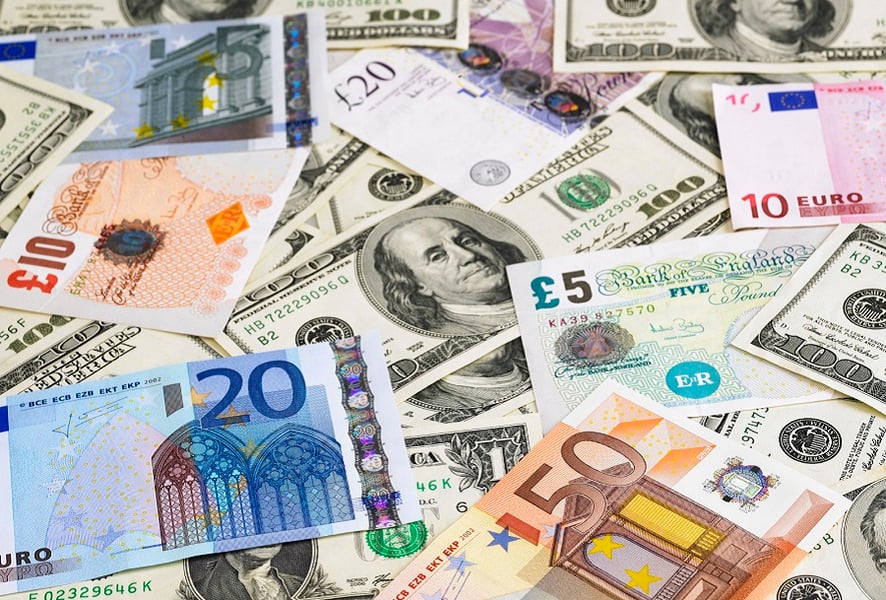Financial advisers who found ways to mute the effect of the surging U.S. dollar on clients' foreign investments weathered the last year well. Those who didn't suffered.
Take the example of the widely used iShares MSCI EAFE ETF (EFA). The $51.8 billion exchange-traded fund tracks a diversified basket of
about 900 well-established companies in developed markets outside North America. Last year — like many funds of its ilk — it lost 5% of its value.
By contrast, the Deutsche X-trackers MSCI EAFE Hedged Equity ETF (DBEF), which emulates a similar MSCI index, gained 5%, according to Morningstar Inc.
The difference is that in addition to buying the foreign securities, managers of the Deutsche Bank AG fund traded derivatives to offset the declining value of global currencies.
Doing so made a big difference. The dollar skyrocketed in value last year as investors sought a safe haven amid
increased concerns about global economic growth. The Wall Street Journal
U.S. dollar index peaked at 84.14 on Jan.8 after hitting a low of 72.47 on May 6.
SWISS FRANC MOVE SPIKES VOLATILITY
Currency volatility reared its head again this week as the Swiss National Bank removed a cap that prevented the country's sought-after safe-haven currency, the franc, from appreciating. The top three constituents in the MSCI index fund, for instance, are the Swiss-based companies Nestle SA, Novartis AG and Roche Holding AG. If that country's currency moves up, a non-hedged exposure would likely appreciate, but the rise in the currency could also make that country's exports less competitive globally. On Thursday, when the currency cap was pulled, the iShares MSCI Switzerland Capped ETF (EWL) rose 3.8%, while DBEF fell about 0.7%.
“Going forward, the important question for investors is whether they should be re-evaluating their hedged Europe exposure, if they had some,” wrote Dave Nadig, chief investment officer at ETF.com, in a blog. “Because the Franc had been pegged to the euro, the case for hedging against a weak euro/strong dollar combo was pretty clear. But with Switzerland now floating, funds like DBEF are now only about half exposed to the euro, with the remainder of the stocks in (British) pounds or Swiss francs. The case against those two currencies is significantly less clear.”
AS EXPECTED
From May through the end of last year, currency-hedged ETFs built by Deutsche, WisdomTree Investments and the iShares unit of BlackRock Inc. mostly performed as would be expected across developed and emerging markets, vastly outperforming their traditional counterparts, in many cases delivering positive returns when, without a hedge, they would have been negative.
“The last six months of the year were the poster-child markets of these kinds of products, and they worked in almost every case,” said Mr. Nadig.
Over the period of the dollar run-up last year, currency-hedged ETFs — many of which are new to the market — attracted $7.6 billion from investors, according to ETF.com.
The funds as a group now manage more than $21.4 billion — sizable, but small in comparison with the hundreds of billions tracking investment strategies whose hedging tactics in international markets are nonexistent or not transparent, according to Dodd Kittsley, head of ETF strategy at Deutsche Asset & Wealth Management.
Mr. Kittsley said advisers started allocating more to international markets in the years prior to 2014, when the dollar was weaker, causing people to underestimate the effect of currency depreciation on international equity returns. At the same time, few investment products for retail investors specifically targeted currency as its own asset class, he said.
“The fact of the matter is awareness around currency remains incredibly low among financial advisers — among investors at large in the U.S.,” said Mr. Kittsley.
Currency-hedged ETFs first took center stage in 2013, when WisdomTree's Japan Hedged Equity Fund ETF (DXJ) became the second-fastest-growing U.S. ETF, vastly outpacing non-hedged counterparts and delivering a 41.9% return.
The products often trade currency forward contracts, a type of derivative, to remove some of the negative effects of depreciation on the currencies where foreign securities are domiciled.
The products have become particularly popular among tactical investors who time foreign- exchange movements, including investors such as Will McGough, a portfolio manager at Stadion Money Management, an adviser-sold ETF strategist.
“We're a big believer in following momentum on a tactical basis, so hedging out currency and accessing momentum internationally is great,” said Mr. McGough. “The U.S. dollar has been a secular bear market for a while and we're starting to see that change. There could be some staying power.”
CURRENCIES AS LONG-TERM ALLOCATIONS
Even though currencies are generally considered a mean-reverting asset, meaning they tend to equalize over the long run, fund companies are trying to make the argument that advisers should start thinking about currencies as part of long-term strategic allocations for clients.
In Deutsche Bank's case, the firm is saying advisers without a position on the directional movements of currencies should simply opt for equity exposure without the currency risk using hedged products.
But analysts warn that hedges are not without their own risks.
“I'm not sure I'd say they're good strategic holdings, as, long-term, it's not clear that hedging adds value,” said Elisabeth Kashner, director of research at ETF.com. “Hedging usually comes at a cost.”
Among those costs: the potential for the dollar to decline in value and the fact that many U.S. investors are already heavily affected by the performance of the dollar and may benefit from diversifying abroad.
“The cost of putting on these hedges is directly related to the local interest rates in the country,” said Mr. Nadig.
That means doing so in Japan, for example, where
interest rates are close to zero, is far cheaper than in Brazil, where those rates are pushing 12%.







